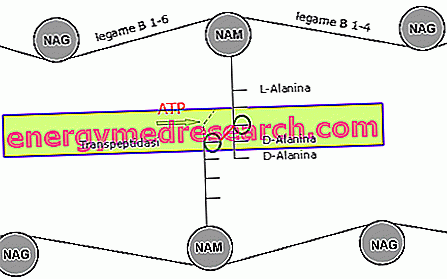What is whitefish?
The whitefish is a freshwater fish belonging to the Salmonidae family (salmonids), to the genus Coregonus and to the lavaretus species (the binomial nomenclature of the whitefish is Coregonus lavaretus ).

Commonly called gold or golden trout, whitefish is quite similar to lake trout, although it has a more silvery coat and a decidedly smaller mouth.
The whitefish belongs to all the fishery products, in turn included in the fundamental group of foods, being a source of proteins with high biological value, specific minerals and vitamins. It is also rich in good fats but, unlike sea products, does not contain iodine.
In the kitchen, whitefish is widely used, especially in the areas surrounding the waterways that are rich in it. This fish can be used as a dish, simply roasted or boiled, or as an ingredient for pasta dishes.
It is fished sustainably and, also thanks to a rather rapid life cycle, it is not an endangered species; it is also subjected to breeding and repopulation.
Nutritional Properties
Nutritional characteristics of whitefish
Whitefish is a food that falls within the range of fishery products; it therefore belongs to the fundamental group of foods, as a primary source of proteins with high biological value, specific minerals and vitamins. It is also poor in "bad" fats and rich in "good fats".
It has a moderate energy supply, not among the lowest but adequate for any circumstance. Calories are supplied mainly by proteins, followed by lipids; carbohydrates are irrelevant.
Peptides have a high biological value, that is they contain all the essential amino acids (in the right quantities) for the human body.
The fatty acids have a prevalence of unsaturated chains, with an excellent percentage of polyunsaturated fats (among which the omega-3 eicosapentaenoic acid EPA and docosahexaenoic DHA will probably be abundant).
Note : EPA and DHA are not considered "really" essential omega-3, a title reserved instead for alpha linolenic acid (ALA); however, they are still the most biologically active exponents of this category.
The fibers are absent and the cholesterol level is unknown (but should be moderate).
Among the minerals, concentrations of potassium and phosphorus stand out; also good levels of calcium and iron.
Note : unfortunately this fish does not contain iodine.
As far as vitamins are concerned, the content of niacin (vitamin PP) and retinol (vitamin A) is appreciated.
The fish is not the object of a particularly widespread allergy and does not contain molecules poorly tolerated by the general population (such as lactose and gluten) even if, in case of poor conservation, it can become a significant source of histamine.
Whitefish is a food that lends itself to most diets. It has no contraindications for obesity and metabolic pathologies; on the contrary, thanks to the presence of EPA and DHA, it lends itself to clinical nutrition against overweight, hypertriglyceridemia, hypertension and decompensated type 2 diabetes mellitus. It is very satiating and therefore it is not usually the object of food abuse. It is also suitable for lactose intolerant and celiac disease; poorly preserved may be harmful to histamine intolerant.
It is logically excluded from the vegetarian and vegan diet. It has no contraindications for Muslim and Kosher religious nutritional regimes; it is to be excluded in Hinduism. It is not recommended to eat it raw; not so much for a taste reason, but for the possible presence of a parasite called Diphyllobotrium latum or fish tapeworm. When it reaches the human intestine, this flat worm reaches a length of 15 m.
The average portion of whitefish, eaten as a dish (second course), is 150-200 g (200-270 kcal).
Note : whitefish eggs are edible and have nutritional characteristics similar to trout and salmon.
| Edible part | 69% | |
| water | 75.3 g | |
| Protein | 19.0 g | |
| Lipids TOT | 6.5 g | |
| Saturated fatty acids | 1.16 g | |
| Monounsaturated fatty acids | 1.40 g | |
| Polyunsaturated fatty acids | 1.98 g | |
| Cholesterol | - mg | |
| TOT Carbohydrates | 0.1 g | |
| Glycogen | 0.1 g | |
| Soluble sugars | 0.0 g | |
| Dietary fiber | 0.0 g | |
| Power | 135.0 kcal | |
| Sodium | - mg | |
| Potassium | 400.0 mg | |
| Iron | 0.9 mg | |
| Football | 89.0 mg | |
| Phosphorus | 263.0 mg | |
| Magnesium | - mg | |
| Zinc | - mg | |
| Copper | - mg | |
| Selenium | - µg | |
| Thiamine | 0.07 mg | |
| Riboflavin | 0.07 mg | |
| Niacin | 4.0 mg | |
| Vitamin A | 96.0 µg | |
| C vitamin | 0.0 mg | |
| Vitamin E | - mg | |
Kitchen
Culinary use of whitefish
Whitefish is a fish with delicious meats. It is very precious but medium prickly. It is eaten mainly as a second course or dish.
The main cooking methods are: boiling (for drowning or steaming) and roast (simple, gratinated, baked or grilled). It is much appreciated in the typical recipe "in carpione", or in the pan "all'acquapazza", instead more used for sea fish. It is also remarkable floured and fried in abundant extra virgin olive oil, or browned in a little butter.
It is considered excellent the whitefish in martana sauce (based on rosemary, garlic, chilli, parsley, pine nuts, green olives deprived of the hazel, anchovies - even from the lake - and capers)
. There are several recipes of marinated whitefish (with lemon or wine and aromatic herbs), sometimes also used to accompany first courses. The famous linguine with whitefish, shaded with marsala and sprinkled with abundant parsley; let's not forget the whitefish risotto flavored with lemon peel.
Eggs are also eaten from the whitefish, completely formed and found in the jar, or incomplete and obtainable during the cleaning of the fish.

Description
The whitefish has a tapered, elongated shape, narrow on the sides (an area that becomes thicker in percentage terms as the size increases). The back and the belly are slightly convex.
The head of the lavarello has a sharp shape, jaws of modest size, round and medium-sized eyes.
The dorsal fin is short, vertical and resembles a trapezoid. The caudal fin is noticeably "V" shaped. There is the classic adipose pinnetta between the dorsal and the caudal.
The livery of the whitefish is basically silver, mottled with green on the back and on the sides; the belly is white. The maximum length of adult specimens is 70 cm for about 3 kg (record 80 cm x 4 kg, on Lake Bolsena), but usually does not exceed 30-40 cm.
Fishing
The whitefish is affected by human withdrawal for food purposes. Its meats are considered among the most prized of freshwater fish and represent a specialty of all the greatest Italian lakes. It is a fairly rare prey in fishing with reeds and is not of great hunting interest for spearfishing. It is mainly threatened with flying or professional mail networks.
It is bred, above all for the repopulation of the fry, mainly in the Trentino Alto Adige region.
Biology
Distribution of whitefish
Whitefish colonizes much of Europe; it is present in the Baltic Sea, in the North Sea, in the fresh waters of the Scandinavian peninsula, in Great Britain, France, Switzerland and northern and central Italy. Recently it has also been identified in Iran.
Whitefish is not a native fish. In fact, none of the waterways of the Bel Paese is its original natural habitat. Taken from the Swiss lakes, it was introduced into the Peninsula only at the end of the 1800s.
Currently it colonizes abundantly the northern lakes (Garda, Maggiore, Como, Lugano etc.) and many central (Bracciano, Bolsena, Trasimeno, Vico etc).
Whitefish habits
It feeds on zooplankton, tiny fish and crustaceans, insects, worms, larvae and probably fish eggs. At a young age it is predated by all predatory fish (trout, char, pike, largemouth bass, perch, sunfish, asp, chub, sandra, etc.), while in adulthood it is mainly undermined by pike and birds (eg cormorants) .
In some areas they are considered permanent and live constantly in the same ecological niches; in others they have pelagic attitudes and move emerging on the surface or towards the shore, or sinking, depending on the season (searching for food or care).
Reproduction of whitefish
The whitefish reproduces with the beginning of the cold season, in correspondence of the calm and shallow rivers. It lays spherical, yellowish and large eggs about 2.5 mm. The incubation lasts a couple of months, after which the small, still incomplete fry are released (about 10 mm in length). These complete very slowly (60-90 days) but reach sexual maturity quite quickly (2-3 years).



